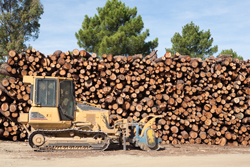Maximising energy output from wood waste
Increasing energy production from renewable sources is top priority in Europe. Energy from wood biomass holds considerable potential for increased production but this is in part dependent on impact on the environment and acceptability to the public. Wood is also highly variable in its energy content and there are large discrepancies in supply from different regions and accessibility. In order to meet Europe's goals to increase energy produced from renewable sources in line with the Kyoto Protocol, more energy could be derived from biomass. If the biomass were wood, not all this can be obtained from felling forest from an environmental point of view. An appealing alternative is to use wood residue from forestry waste and processing industries. In response to the demand to optimise the use of energy wood, the EU project ECHAINE aimed to compile comprehensive data on energy production chains throughout Europe. The main issues covered were the identification of economic sources of wood supply, methods of production, costs and use potential. The project identified no fewer than 10 energy wood production chains in use in Europe. The methodologies within each chain varied widely even down to the terminology used. Moreover, large differences in availability within Europe due to seasonal and other regional factors such as harvesting methods had a significant impact. Ecologically and economically sound aspects of energy wood include obtaining wood from logging residues. Branches and tops can be used, mainly from regeneration fellings. To reduce overheads, successful techniques used in Sweden and Finland included multi-tree handling for cost-effective felling and bundling of logging residues to reduce haulage costs. Scale of production was deemed to be an important factor in maximising energy output per unit of wood. Large scale enables the use of capital intensive systems and full efficiency in chipping plants. Full operation of machinery and constant availability of wood were two of the most important factors. The findings of the ECHAINE project have been widely disseminated through the Internet, seminars and international workshops. Elucidation of energy wood variations and consequent adaptation of processing systems should ensure that energy wood is a viable form of biomass energy.







